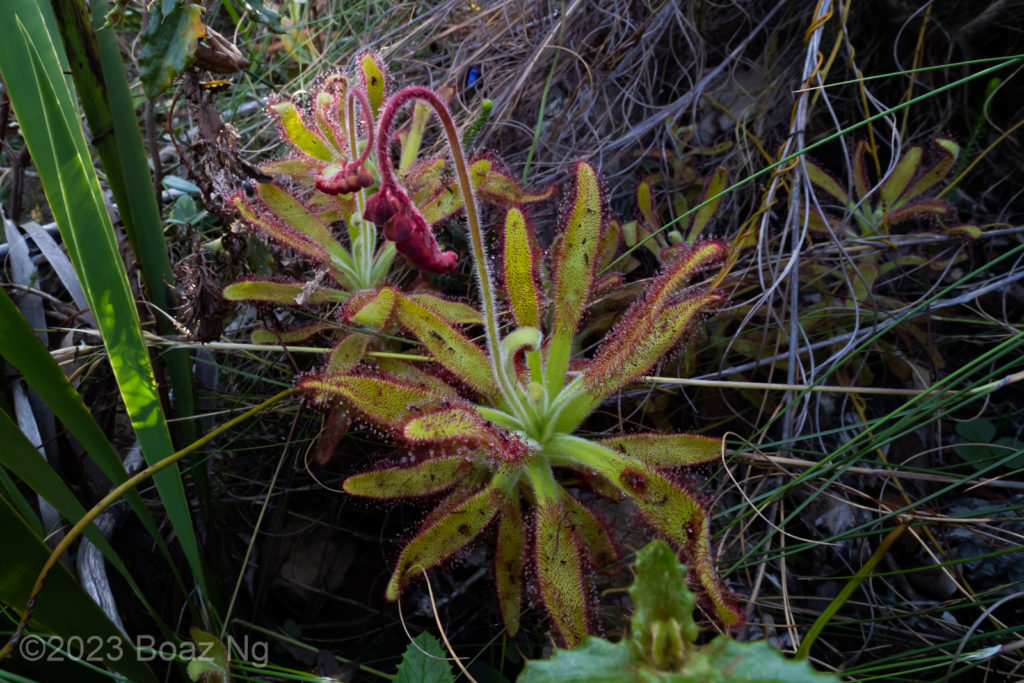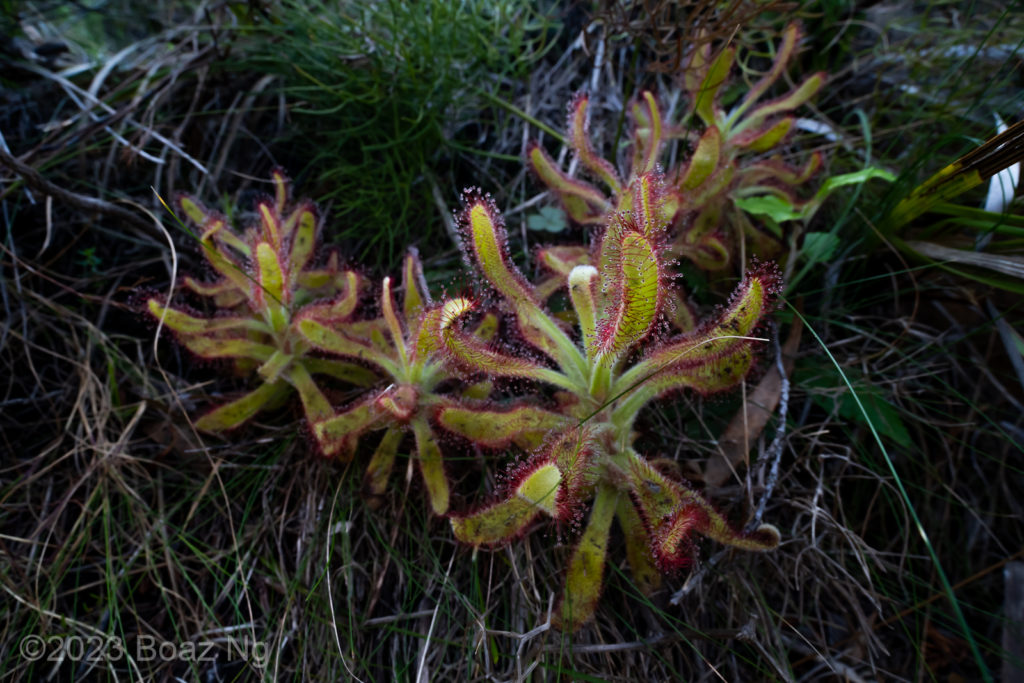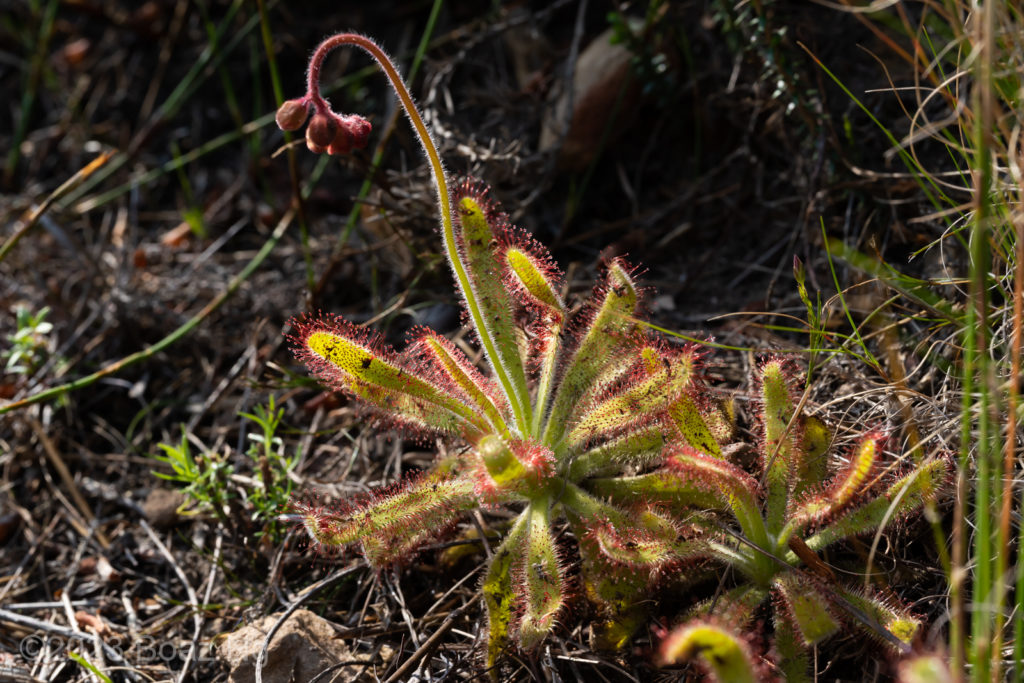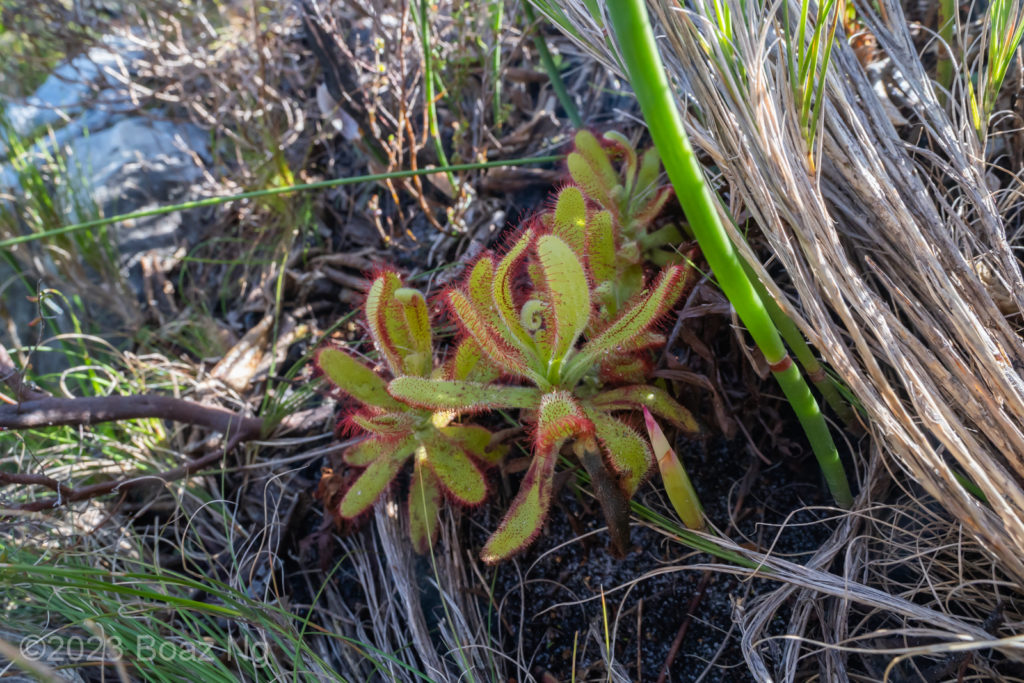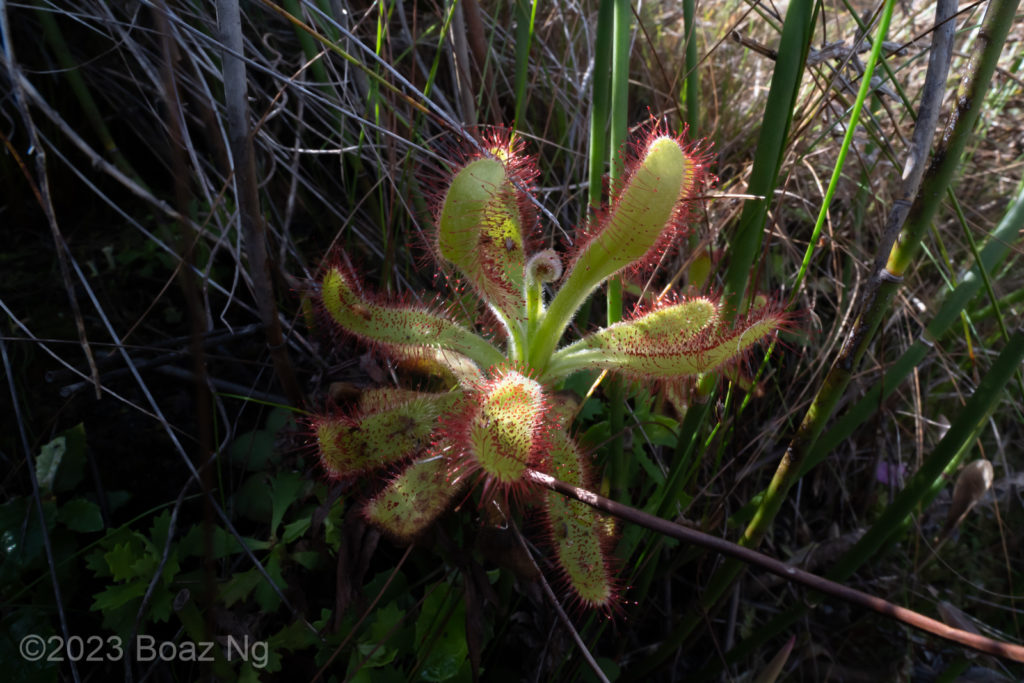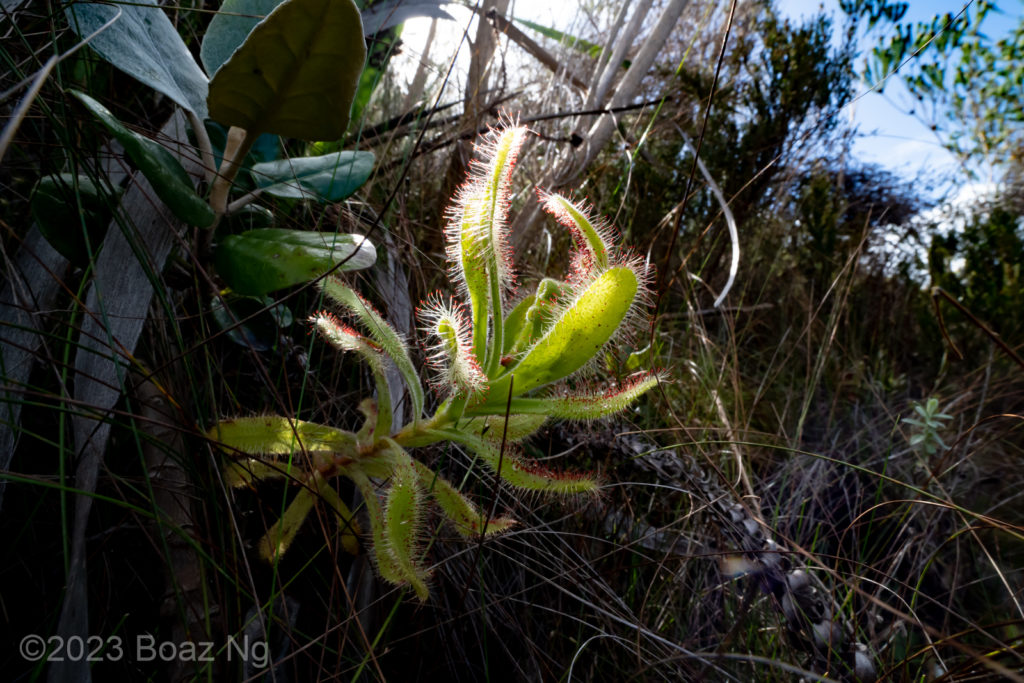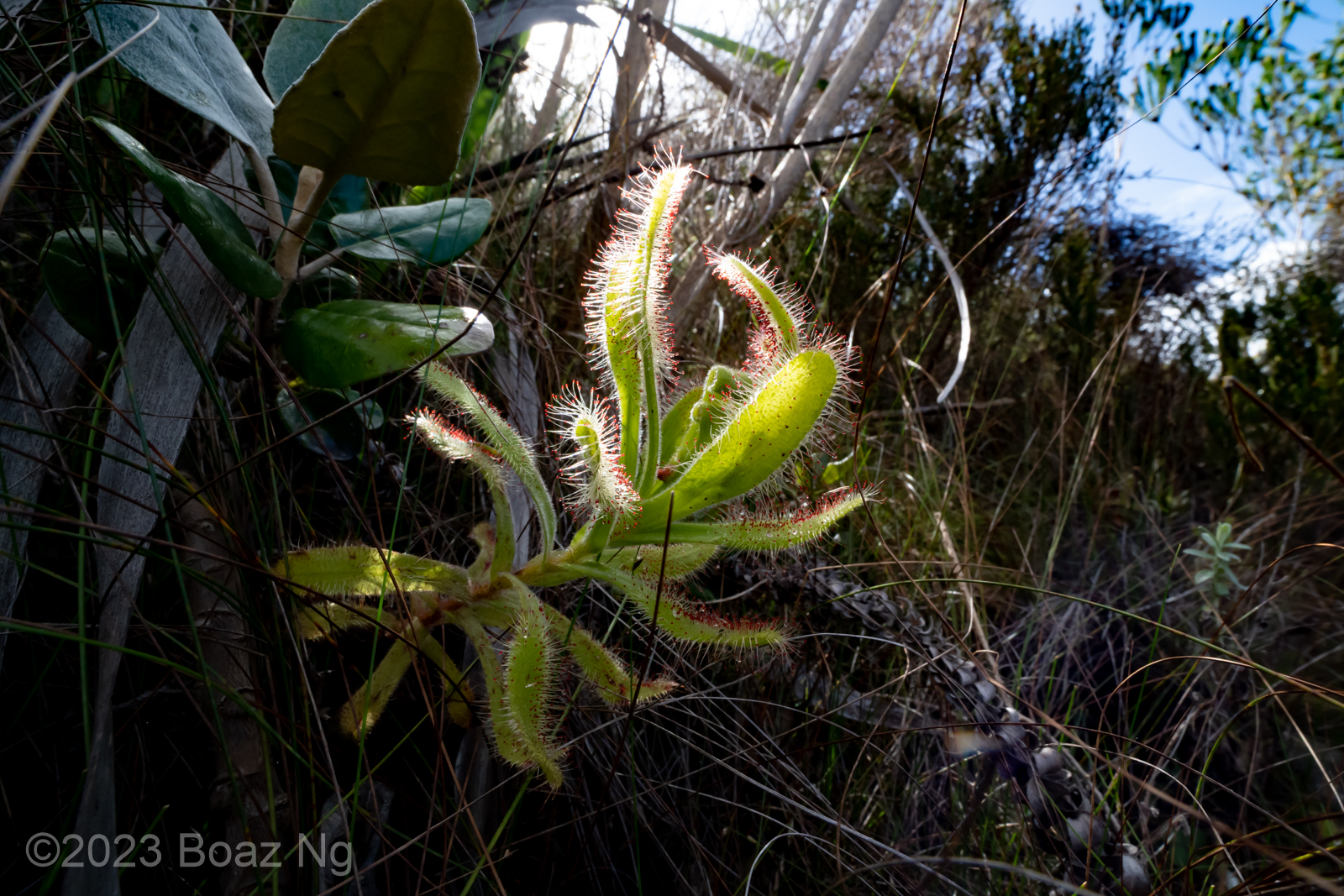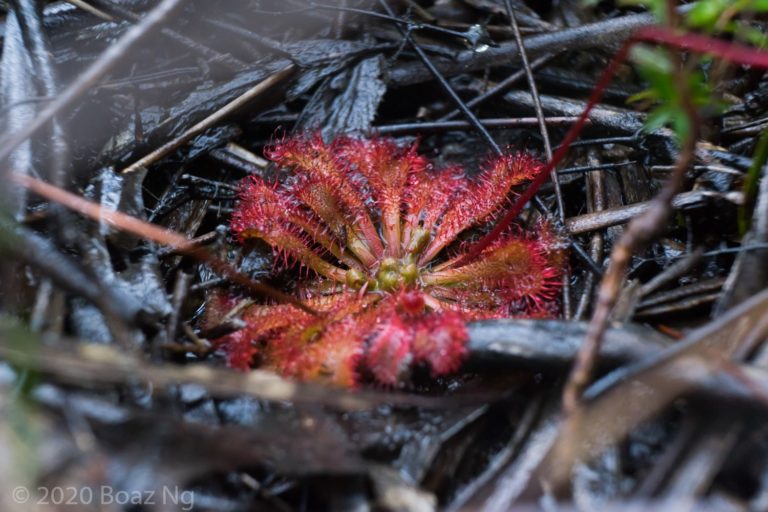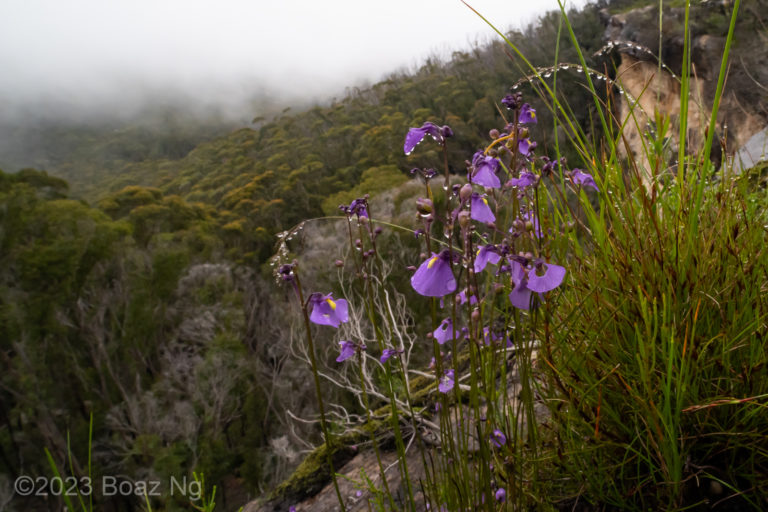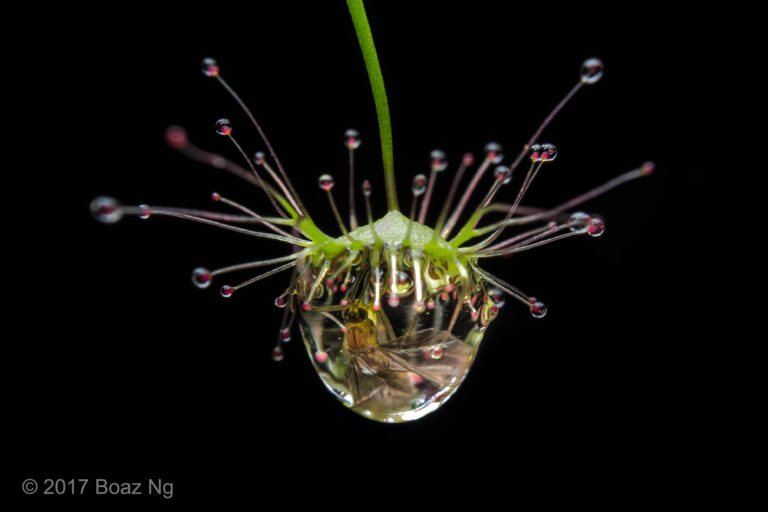Drosera hilaris is a South African sundew from the Western Cape. The species is known for its large rosette of thick, semi-raised leaves which are particularly beautiful.
Drosera hilaris is a medium-sized sundew with a rosette that grows around 10cm in diameter. The plants can grow a sprawling stem around 30 cm in length. The leaves are long and broad, with expanded petioles and laminae. A dense layer of furry white hairs covers the petioles and flower scapes. The flowers are pink.
The species is endemic to the coastal mountains of the Western Cape in South Africa. It is found on well-drained, steep slopes within the fynbos biome and prefers sheltered clayey patches between bushes. It is rather successful at colonising embankments alongside walking trails. The species is winter growing, with a summer dormancy period. Flowering occurs in late spring.
Drosera hilaris is distinguished from all other South African sundews by its very thick, semi-erect leaves. It is most similar to Drosera ramentacea and shares a habitat in steep, coastal fynbos. Drosera hilaris is distinguished by its broader and flatter petioles, and a preference for sheltered niches (D. ramentacea has thinner petioles that are rounder in cross-section, and prefers very exposed niches). It is somewhat similar to Drosera capensis but is distinguished by its thicker leaves and well-drained habitat (D. capensis has thinner leaves and grows in permanently wet environments). It is also similar to Drosera ericgreenii but differs in that it is substantially stem-forming and has a less-hairy flower stem (D. ericgreenii does not readily form a stem and has an extremely hairy flower stem towards the base).
